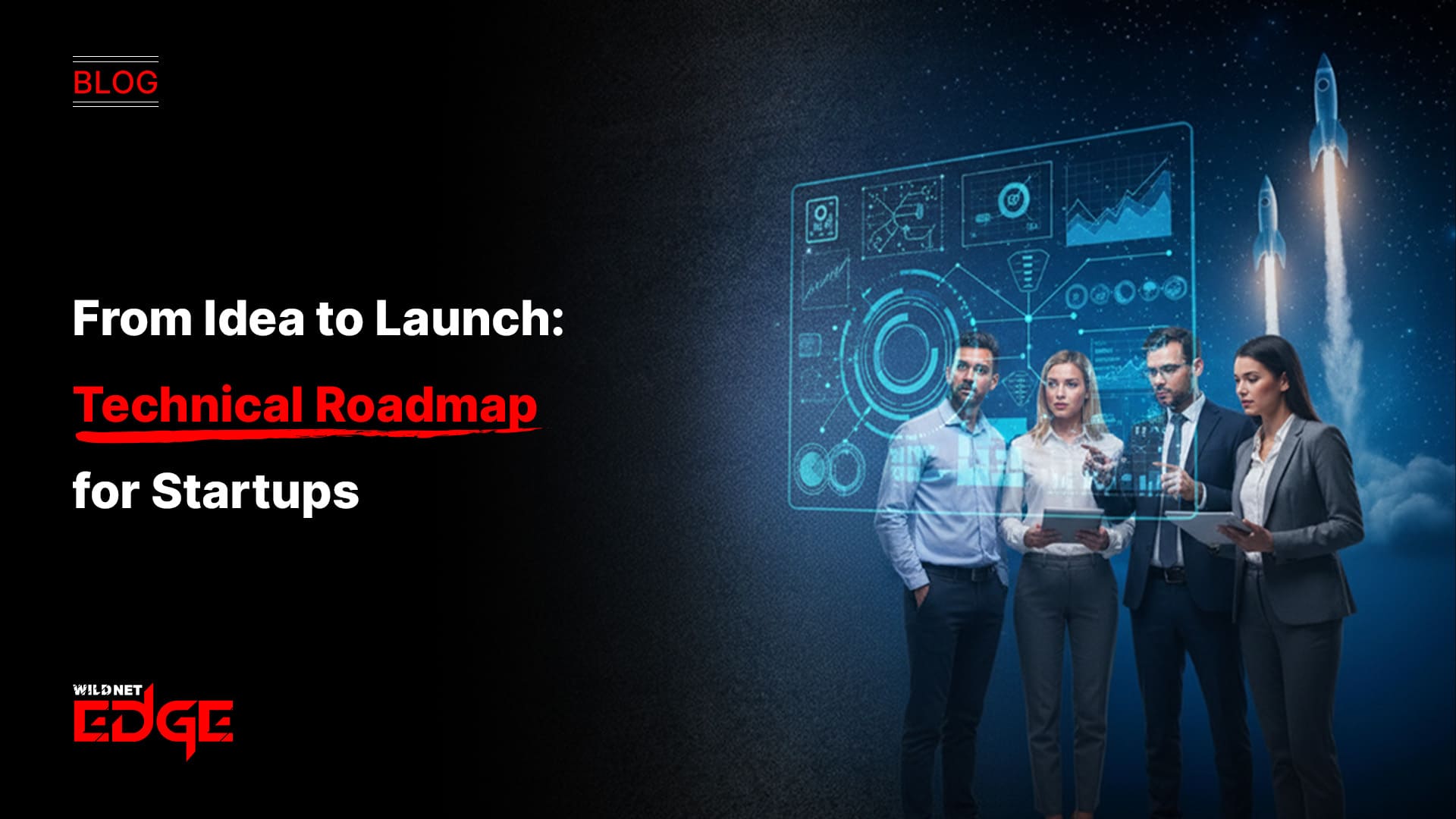TL;DR
This article outlines the essential components of a startup technical roadmap, framing it as a crucial strategic guide for transforming an idea into a market-ready product. The guide details key phases, including thorough market validation, defining the Minimum Viable Product scope, selecting the right technology stack, and executing agile development sprints. It also emphasizes the importance of rigorous testing and a well-planned startup launch plan.
Every successful startup begins with a spark, an innovative idea. But turning that spark into a sustainable business requires a clear plan. For tech startups, the most critical plan is the startup technical roadmap. This is your strategic blueprint, guiding you through the complex journey from a raw concept to a market-ready product, ensuring you build the right product, the right way, without wasting precious time and resources.
What is a Startup Technical Roadmap?
A startup technical roadmap is a strategic document that outlines the key technical milestones, features, and architectural decisions required to build and launch your software product. It converts your business vision into an actionable plan for your development team. It’s different from a generic startup product roadmap because it focuses specifically on the how: the technology choices, development phases, and technical dependencies.
This roadmap is not a rigid, unchangeable document. Instead, it’s a living guide that evolves as you learn more about your market and your users, especially during the crucial idea to MVP phase. It provides direction while allowing for the flexibility needed in the early stages of a startup.
Why Every Startup Needs a Technical Roadmap
Skipping the roadmap might seem like a way to move faster, but it almost always leads to chaos, wasted effort, and costly mistakes down the line. A clear roadmap is essential for:
- Alignment: Ensures everyone from founders, investors to developers understands the technical plan and priorities.
- Resource Management: Helps you allocate your limited budget and development resources effectively.
- Risk Mitigation: Forces you to anticipate potential technical challenges and plan for them.
- Investor Confidence: Demonstrates to investors that you have a well-thought-out plan for execution.
- Focus: Keeps the team focused on the most critical technical tasks needed to achieve the next business milestone, often the MVP launch.
Key Phases of Your Startup Technical Roadmap
Building a successful product follows a logical progression. Your software roadmap for startups should reflect these key phases.
Phase 1: Idea Validation & Research (Pre-Development)
Before writing any code, rigorously validate your core idea. Who is this for? What specific problem does it solve? Is the market large enough? This phase involves market research, competitor analysis, and customer discovery interviews. The technical implication here is understanding the core user needs that the software must address.
Phase 2: MVP Definition & Scope
Based on your validation, define the Minimum Viable Product. What is the absolute smallest set of features needed to solve the core problem for your early adopters? This is a critical step in your idea to MVP journey. Cut short on non-essential features. A clearly defined MVP scope prevents scope creep and keeps your initial build focused and lean. This is the foundation of effective MVP Development.
Phase 3: Technology Stack Selection
Choosing the right technologies is a crucial decision with long-term consequences. Consider factors like:
- Scalability: Can the tech handle future growth?
- Performance: Will it deliver a fast user experience?
- Developer Availability: Is it easy to find skilled developers for this stack?
- Cost: Are there significant licensing or hosting costs? This decision impacts your entire startup technical roadmap.
Phase 4: Architecture & Design
Planning the architecture upfront ensures you build a scalable, maintainable, and secure system. Ask questions like: How will the software be structured? Will you use a monolithic or microservices architecture? How will the database be designed? This phase often involves creating technical diagrams and specifications.
Phase 5: Agile Development Sprints
Break the MVP development into manageable chunks called sprints (typically 1-2 weeks long). Use an agile methodology to build, test, and get feedback iteratively. This allows for flexibility and ensures the product evolves based on real learnings. Consistent progress is key during this phase of Product Development.
Phase 6: Testing & Quality Assurance (QA)
Integrate testing throughout the development process. Automated tests (unit, integration) and manual QA are essential to ensure a stable, bug-free product. A buggy MVP can kill your startup before it even gets started.
Phase 7: Deployment & Launch Preparation
Plan your deployment strategy. How will you release the app? What cloud infrastructure will you use? Prepare your servers, monitoring tools, and your startup launch plan. Ensure you have analytics tools in place to track user behavior from day one.
Our Technical Roadmap Services in Action: Case Studies
Case Study 1: A SaaS Startup’s MVP Strategy
- The Challenge: A non-technical founding team had a complex vision for a B2B SaaS platform but no clear technical plan or budget. They were struggling to communicate their needs to potential investors.
- Our Solution: We conducted a comprehensive discovery phase, helping them define a lean MVP scope and creating a detailed startup technical roadmap. This included technology stack recommendations, architectural design, and a phased development plan with cost estimates.
- The Result: The simple, step-by-step plan and the focus on the MVP helped the founders get seed funding. This phased approach let them launch their main product fast and affordably, which proved their market assumptions were correct.
Case Study 2: A Mobile App’s Pivot
- The Challenge: A startup launched a mobile app MVP based on their initial roadmap, but early user feedback indicated a significant flaw in their core user flow.
- Our Solution: Because they were following an agile approach guided by their initial software roadmap for startups, they were able to adapt quickly. We helped them analyze user feedback, reprioritize their backlog, and rapidly iterate on the user experience in subsequent sprints.
- The Result: The startup successfully pivoted its product based on real user data. The flexibility built into their roadmap allowed them to make this critical change efficiently, ultimately leading to strong product-market fit.
Our Technology Stack for Startups
We choose technologies optimized for speed, scalability, and the startup ecosystem.
- Frontend: React, Vue.js, Flutter
- Backend: Node.js, Python, Ruby on Rails
- Cloud Platforms: AWS, Google Cloud, Firebase, Heroku
- Databases: PostgreSQL, MongoDB
- DevOps: Docker, Serverless, CI/CD Tools
Conclusion
A well-defined startup technical roadmap is more than just a project plan; it’s your strategic guide through the uncertainty of building a new venture. It aligns your team, focuses your resources, and provides the structure needed to navigate the crucial journey from idea to MVP and beyond. While flexibility is key, starting with a clear plan dramatically increases your odds of success.
Need more than a plan? Need an advantage? Partner with Wildnet Edge, leverage our AI-first approach to enhance your Custom Software Development. Build intelligent, data-driven products that help you find PMF faster and scale smarter.
FAQs
A product roadmap focuses on what features to build and why (market needs). The startup technical roadmap focuses on how to build them the architecture, technology choices, and development phases needed to deliver those features reliably and scalably. Both are essential, but they serve different purposes.
Your initial roadmap for the idea to MVP phase should be detailed enough to estimate costs and timelines accurately but flexible enough to accommodate changes based on early feedback. Focus on clearly defining the MVP scope and the core architecture. Avoid over-planning features far into the future.
The biggest mistake is either skipping it entirely or creating a rigid, waterfall-style plan that doesn’t allow for iteration. Startups need both direction and the ability to adapt based on learning, which is central to a good software roadmap for startups.
Partner with an experienced technical advisor or development agency. They can analyze your specific product requirements and recommend the most appropriate and future-proof technology stack.
Yes, but keep it high-level. Your roadmap should outline the potential vision for “Version 2” and beyond, but acknowledge that these plans are highly likely to change based on the feedback you receive after launching the MVP.
Investors want to see that you’ve thought through the execution details. A clear startup technical roadmap demonstrates technical competence, provides a basis for budget discussions, and shows you have a realistic plan for building the product.
Testing should be an integral part, not an afterthought. Your roadmap should explicitly include phases or tasks for setting up automated testing frameworks and conducting thorough Quality Assurance before the startup launch plan goes into effect.

Nitin Agarwal is a veteran in custom software development. He is fascinated by how software can turn ideas into real-world solutions. With extensive experience designing scalable and efficient systems, he focuses on creating software that delivers tangible results. Nitin enjoys exploring emerging technologies, taking on challenging projects, and mentoring teams to bring ideas to life. He believes that good software is not just about code; it’s about understanding problems and creating value for users. For him, great software combines thoughtful design, clever engineering, and a clear understanding of the problems it’s meant to solve.
 sales@wildnetedge.com
sales@wildnetedge.com +1 (212) 901 8616
+1 (212) 901 8616 +1 (437) 225-7733
+1 (437) 225-7733































